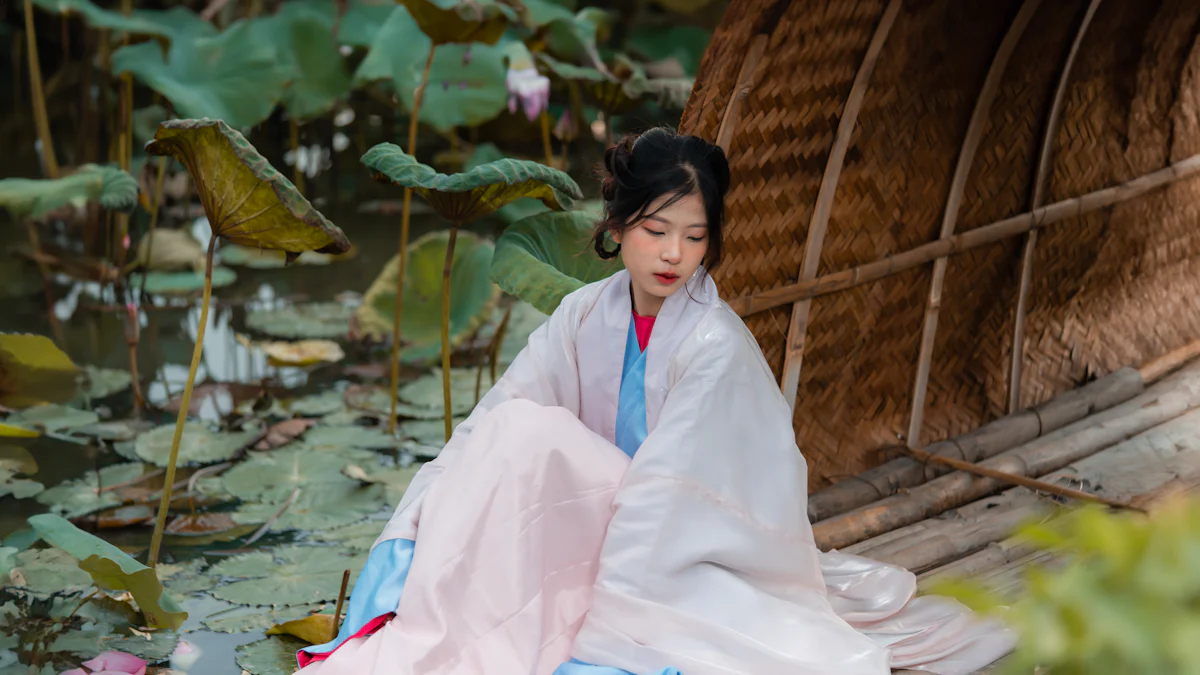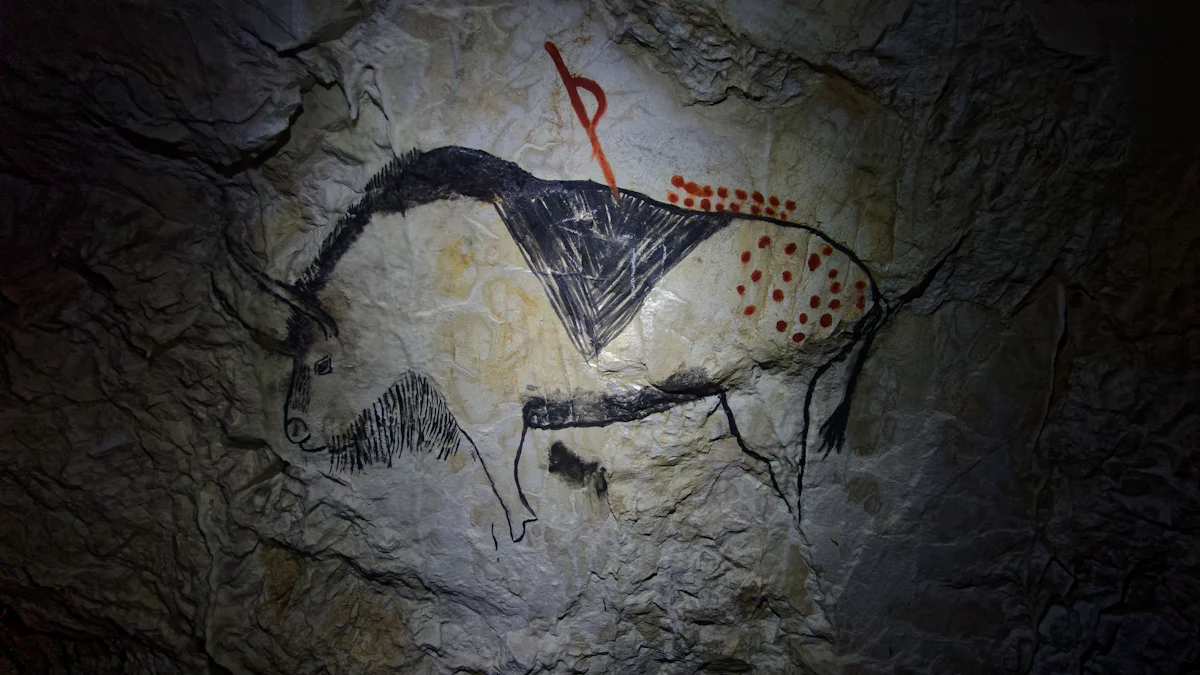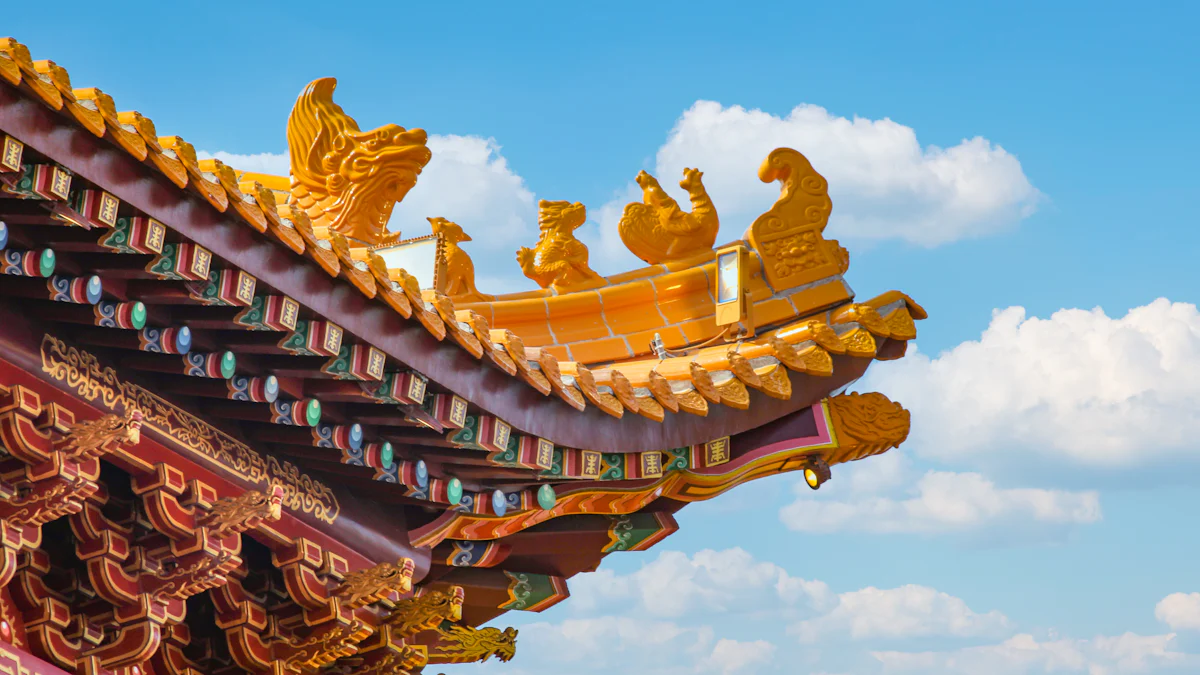
Exploring the rich tapestry of women Hanfu and Qipao unveils a captivating journey through Chinese sartorial heritage. Understanding the nuances between these traditional garments is pivotal in appreciating their cultural significance. This blog aims to unravel the distinctive features, historical roots, and modern adaptations of women Hanfu and Qipao, shedding light on their symbolic importance in Chinese culture.
History and Origin

Exploring the historical roots of women Hanfu unveils a rich tapestry of traditional Chinese garments that date back to ancient times. Women Hanfu represents the traditional attire of the Han Chinese, the ethnic majority in China, with a history spanning over three millennia. After the Ming Dynasty, Hanfu gradually gave way to Manchu clothing, including Qipao and other styles.
During the Qing Dynasty, the influence of Manchu culture led to the evolution of Qipao. Initially introduced as a form-fitting dress with a high collar, Qipao has undergone modern adaptations to suit contemporary fashion trends while retaining its cultural essence. The origin of Qipao can be traced back to the Qing Dynasty when it became popular among women in China.
The transition from women Hanfu to Qipao marked a shift in traditional Chinese attire influenced by historical events and cultural exchanges. While women Hanfu reflects ancient traditions and values, Qipao symbolizes elegance and sophistication in modern Chinese fashion.
In this blog section, we will delve into the early development and historical influence of women Hanfu, highlighting its significance in Chinese heritage. Additionally, we will explore how Qipao evolved from its origins in the Qing Dynasty to become a symbol of contemporary style while preserving elements of traditional craftsmanship.
Design and Features

Structure of Women’s Hanfu
The Women’s Hanfu embodies a harmonious blend of elegance and tradition, characterized by its distinctive structure. The Upper Garment (Paofu/Ru Jacket) serves as the epitome of grace, draping the wearer in flowing lines that evoke a sense of timeless beauty. This garment symbolizes the essence of femininity and cultural heritage, reflecting the intricate craftsmanship passed down through generations. Adorned with intricate embroidery and delicate patterns, the Upper Garment exudes sophistication and grace.
Contrastingly, the Lower Garment (Qun Skirt) complements the upper ensemble with its graceful simplicity. Flowing gracefully to the ankles, the Qun Skirt symbolizes modesty and poise, embodying traditional values of grace and refinement. Its understated elegance allows for ease of movement while maintaining a sense of cultural authenticity. The pairing of the Upper Garment with the Qun Skirt creates a harmonious silhouette that captures the essence of traditional Chinese aesthetics.
Characteristics of Qipao
The Qipao, also known as cheongsam, stands as an iconic representation of modern Chinese fashion with a rich historical legacy. Its form-fitting design accentuates the curves of the body, exuding an aura of sophistication and allure. The sleek silhouette of the Qipao highlights feminine grace and elegance, making it a timeless choice for various occasions.
With its high collar and slits along the sides, the Qipao strikes a balance between modesty and allure. The high collar adds a touch of refinement to the attire, framing the neckline elegantly. Meanwhile, the slits on either side offer glimpses of movement and grace as one walks, adding a subtle hint of sensuality to this classic garment.
Cultural Significance
Symbolism in Women’s Hanfu
Representation of Traditional Values
Women Hanfu embodies a cultural legacy that transcends time, symbolizing the essence of traditional values cherished by the Han Chinese. The intricate designs and flowing silhouettes of Women Hanfu reflect a deep-rooted connection to ancient customs and beliefs. Each embroidered detail and fabric choice carries symbolic significance, representing virtues like respect, harmony, and filial piety. Through its elegant craftsmanship, Women Hanfu serves as a visual ode to the moralistic ideals upheld by generations past.
In modern times, the resurgence of Women Hanfu signifies a revival of traditional values in contemporary society. By donning these exquisite garments, individuals pay homage to their cultural heritage while embracing a sense of identity deeply intertwined with Chinese history. The popularity of Women Hanfu at international cultural festivals underscores its universal appeal as a symbol of Chinese tradition and pride.
“Various international cultural festivals often feature Hanfu as a representation of Chinese heritage.”
Revival in Modern Times
The revival of Women Hanfu in modern times has sparked a renewed interest in traditional Chinese attire among younger generations. This cultural reawakening provides individuals with a platform to express their unique identity through fashion while honoring the legacy of their ancestors. Fashion designers worldwide have taken note of this trend, incorporating elements inspired by Hanfu, such as flowing silhouettes and intricate patterns, into their collections.
The global recognition of Han Clothing highlights its enduring influence on neighboring Asian countries’ traditional costumes. By embracing Hanfu, individuals not only celebrate their cultural roots but also contribute to the preservation and promotion of authentic Chinese heritage on an international scale.
Qipao in Contemporary Culture
Association with Elegance
The allure of the Qipao lies in its timeless elegance that transcends fashion trends and captivates admirers worldwide. With its form-fitting silhouette and high collar design, the Qipao exudes sophistication and grace, making it a quintessential choice for formal occasions. The association of Qipao with elegance reflects its status as an iconic symbol of modern Chinese fashion that continues to inspire designers globally.
Usage in Modern Fashion
In contemporary culture, the versatility of the Qipao extends beyond traditional settings to encompass modern interpretations in the realm of fashion. Fashion enthusiasts embrace the adaptability of the Qipao, incorporating it into everyday wear or infusing elements into avant-garde designs. This fusion of tradition and innovation showcases the enduring appeal and relevance of the Qipao in today’s dynamic fashion landscape.
- Highlighting the key differences in design and style between Hanfu and Qipao offers a deeper understanding of traditional Chinese garments.
- Exploring why Hanfu and Qipao are strongly associated with Chinese culture and identity reveals the essence of sartorial heritage.
- Clarifying the historical origins and distinctions between Hanfu as ancient attire worn by Han Chinese up to the Qing dynasty, and Qipao as a specific 20th-century garment popularized in the 1920s, enriches our appreciation for these iconic styles.






